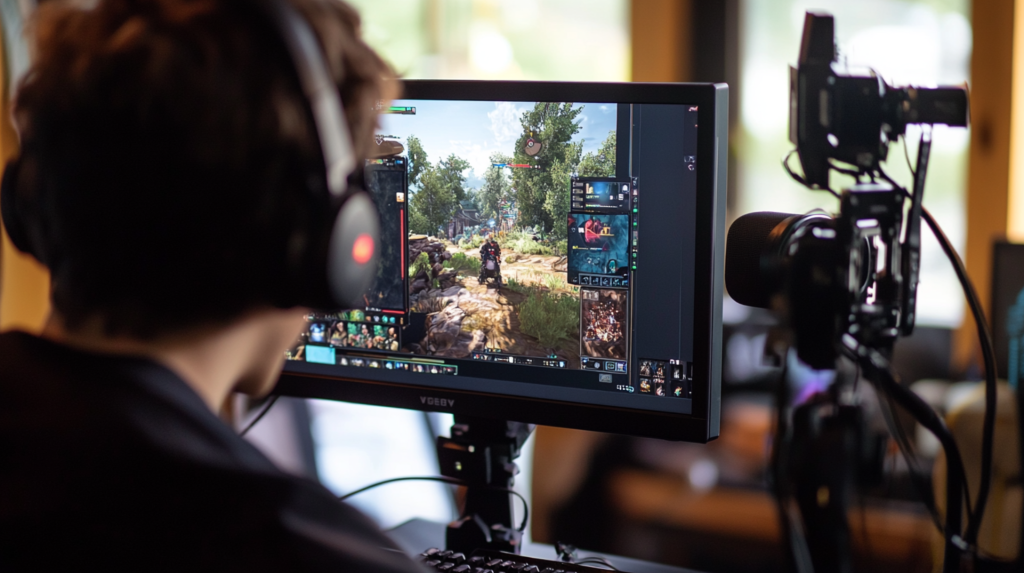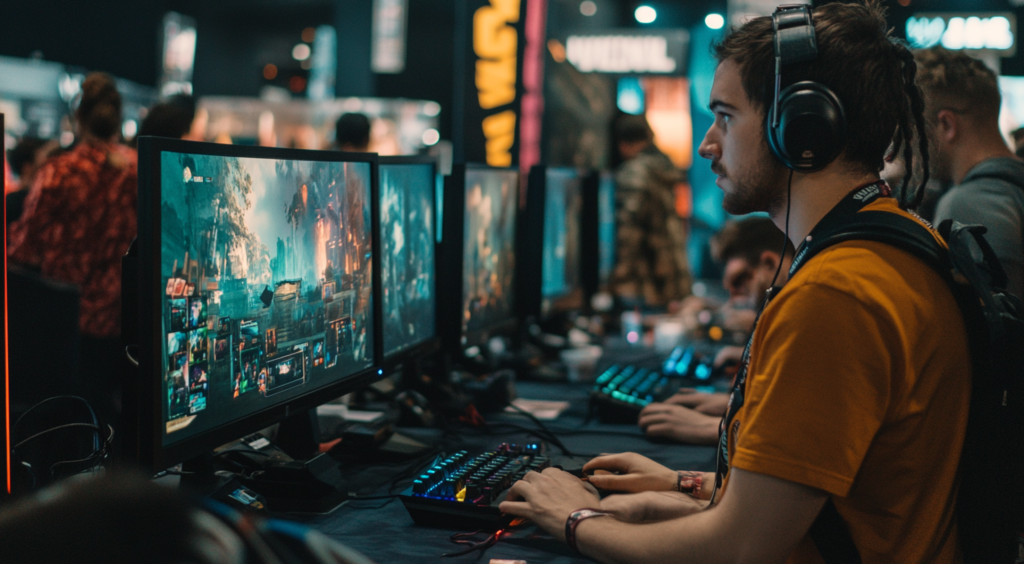It’s no secret that the video game marketing challenge – in particular that faced by indie devs and small publishers – has increased in intensity in recent years. The sheer number of games available, and the exemplary quality of many of them, means it’s more of a challenge than ever to stand out.
Moreover, the industry shifts and changes at a very rapid rate, and trends that looked dead certs last year might be completely obsolete today. When you’re focused on making the very best indie game you can, finding time to stay abreast of marketing patterns can be the last thing on your mind.
We work on dozens of marketing campaigns each and every year, so we have the advantage of being able to spot and predict trends on the fly. I wanted to share what we’re seeing at the moment, to help you understand what video game marketing actually works for indies in 2025.
Indie game PR
Once the bastion of indie game marketing, the gaming press has diminished in importance in a lot of people’s minds over the past few years. However, it’s clear to us that the press still has an impact. Even a single well-timed article, published by a major outlet, can make a difference in your Steam wishlist numbers to the tune of thousands.
Additionally, we know from player surveys that while reading a positive review might not make them rush out and buy a game on the spot, when the time comes to making their next purchase, people are still generally inclined to take a glance at how certain games have been received in the media.
Since it’s generally a low-cost approach, seeking coverage in the media, therefore, is still a great option for indie developers. But how easy is it to achieve coverage?
With the games media having struggled financially in recent years, we are now seeing smaller editorial teams with fewer column inches to fill. And that’s without any downturn in the number of developers and publishers fighting for coverage. This means the landscape is more competitive than ever.
Long gone are the days where simply being an indie dev making a decent-looking game was newsworthy. Nowadays, a journalist could probably find 20 games a day to fill that gap.

We speak to journalists all the time, and at present they are telling us they want to see three things in particular when receiving indie game pitches.
The first is an exciting, original concept that hasn’t been done before. There is little reason, the press say, for them to spend one of their precious few article slots on something generic or uninspired, even if it appears to be especially well-made.
The second is exciting, dynamic content. Words alone don’t drive clicks, so being able to lead with an impactful trailer that grabs people’s attention is more important than ever.
The third is timely access to review code. Yes, after years of perceived unimportance, reviews are making a comeback and editors tell us that a review of an indie game is far more likely to serve traffic to their websites than a simple news story. However, major publishers producing big-name games get to ‘skip the queue’ – requiring critics to drop everything to cover their games at a moment’s notice. Get a finished copy of your game into their hands at least three or four weeks before launch, the press tell us, and you’ll dramatically increase your chances of coverage.
Influencer marketing
Influencers have been on every indie’s agenda for some time now, with many reporting that a well-timed video from a prominent creator has resulted in significant boosts in wishlists, downloads and sales. As such, this is one of the most common services that developers first approach us about.
However, as with the press, this is an extremely competitive landscape and – in many ways – can be even harder to predict outcomes for than when working with the traditional media.
The reason for this is that modern content creators frequently blur the line between editorial and promotional content. Creators switch freely between giving their unbiased opinions on games and industry trends, and acting as a mouthpiece for developers and publishers promoting their new games. It isn’t unusual to approach the same influencer about two different games on two different days, and get one reply offering to cover the game for free, and another offering to cover the other game for an extraordinary amount of money.
Developing and nurturing relationships with prominent content creators can be a real benefit to indie games and it’s an ecosystem that can often work well for both parties. But there are some important considerations.

Major creators now almost always take paid content as a starting point – and the very biggest creators, usually via their management agencies, will often quote high four- or even five-figure prices for a single stream or video. Even a promotional video with a medium-sized influencer is likely to set you back upwards of $3,000. While influencer videos can be impactful, it’s important to consider whether or not this is a spend that is ultimately likely to pay for itself.
Additionally, it’s crucial to look past raw numbers and give more careful thought to which influencers to approach. Will their audience actually be engaged with your game? There’s no point in paying ten grand to show your product to half a million people who decide it isn’t for them.
Earned coverage is still possible, albeit competitive. Your goal is to find creators who appear to be genuinely excited about the sort of game you’re making and have a good track record of producing content in relation to similar games, which has been well received by their audience. To this end, resist the temptation only to approach the biggest content creators: finding smaller creators with a niche but passionate audience is often the best bet.
Events for indies
Once upon a time, it was a given that any serious indie game developer would market their game at a range of events. A standard video game marketing budget for small studios would frequently include the cost of flights to GDC or a stand at EGX or Gamescom.
Then 2020 arrived, a little pandemic thing happened, and the world shut down for a couple of years. Studios quickly pivoted to other marketing methodologies, many of which were more affordable despite offering similar results.
The result has been a crash in the games events sector. Several indie-focused events have shut down entirely and major events have begun to cater more to triple-A publishers. Prices to exhibit have increased, while the number of relevant industry professionals in attendance – journalists, influencers, publishers – has noticeably declined.

So, should you write off event appearances as a part of your marketing strategy? Not necessarily – but it’s more vital than ever to go into such events with a proper plan of how to make the most of them. When you’re spending this much money, you can’t afford to simply show up and hope.
What this means is setting clear and measurable goals for the event and then planning marketing activities to hit them. What do you want to do? Bolster your wishlist or Discord server? Why not offer players the opportunity to join your next beta test if they’ll wishlist the game or sign up right there in front of you? Want to generate some press attention? Why not reach out to attending journalists in advance and invite them to come and take a look at the game? Keep track of your progress throughout the event and be prepared to shake things up if it isn’t working.
There’s also the option of attending events even if you’re not formally exhibiting. Parties and after-show mixers can be a great place to meet people who may be able to give you a helping hand later down the line.
Digital advertising
Often overlooked and derided, digital advertising is not something that indie developers should be sniffing at in 2025. We hear a lot of developers talking about how they tried running ads but they didn’t move the needle – but when we dig into it in more depth, we find critical components of the campaign that simply weren’t effectively optimised.
Digital ad platforms are more accessible than ever, but the default options to build out a campaign are often insufficient for the sort of return that indies need. It is very easy to spray a ton of money into the ether and come away with a whole heap of vanity metrics and not much else.
Spending some time learning how to effectively target and optimise for a niche audience, and in particular the actions you want them to be taking, can make a real difference here and result in predictable, reliable growth for your game – whether it’s acquiring more wishlist additions, bringing players into a community, or driving downloads of your new mobile release.

Effective optimisation is hard work: it involves oodles of testing, modelling, data analysis and more besides. I often tell people that digital advertising is a game of educated guesswork and trial-and-error. That’s admittedly a reductive way of looking at it, but it is to say that simply switching on an ad and hoping for the best isn’t going to work, and that there’s no single tried-and-tested method for driving results. Every audience is different, and the way people interact can shift and change over time – so you need to be on your toes, incredibly diligent about your data, and prepared to tweak and change things until the magic happens.
When you’re driving iOS downloads for $0.20 a user, or achieving a $1 cost-per-wishlist for your $20 Steam game, you’ll be glad you put in the effort.
But it isn’t for every game. We tend to find that instant-appeal F2P mobile titles are the best candidate for digital advertising, followed by Steam games with a clear and obvious aesthetic appeal. If you’re making something more avant-garde, you may need to seek other options, unless there’s a very passionate niche to target.
The most crucial video game marketing advice in 2025
There’s one critical point to make, though, which isn’t covered by the above: whatever marketing options you choose, they need to be purposeful and impactful, and they need to support a product that people want.
The games market is incredibly discerning and can very quickly tell the difference between an excellent game and a simply okay one. They are spoiled for choice and have many inventive and unusual games to decide between. If your game doesn’t obviously bring anything new or exciting to the table, why should any of them care?
A great marketing campaign can make a great success out of a great product. What it can’t do is make a great success out of a sub-par product.
This is why we often recommend that developers who approach us begin – wherever time and budget permits – with a full strategy phase. We want to figure out together what this game actually is – what’s its identity, its positioning? – and why should people care about that? What is its USP, its unique selling point – that is, something that the market actually wants and which is only true of your game? Being able to answer these question is critical because it informs every other thing you do to market your game.
With a good strategy informing good marketing choices, it’s clear that indies can (and do) achieve incredible success. In many ways, the answer to the question “what video game marketing actually works in 2025?” is “any of it can work – but only when deployed for the right reasons for the right game”.
If you’re interested in developing a strategy together, you can learn more about our services here, or reach out to book in a free consultation.




